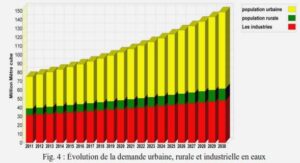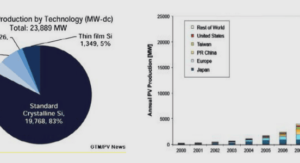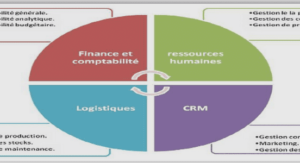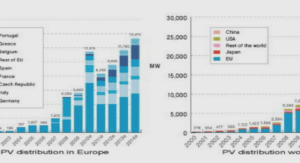Télécharger le fichier original (Mémoire de fin d’études)
Un objet aux fonctions multiples, élément clé de la régulation des processus génomiques
Plusieurs fonctions sont associées au nucléosome, ce qui en fait un élément capital de la vie de la cellule. Tout d’abord, et comme expliqué précédemment, le nucléosome est le premier niveau de repliement de l’ADN, permettant à 146 pb de former autour de l’octamère d’histone une unité génomique de 2.8 Å (Luger et al., 1997). Le nucléosome est également associé à des fonctions régulatrices des différents mécanismes génomiques tels que la transcription ou la réplication, à la fois en contrôlant l’accès à la séquence d’ADN et en servant de substrat pour un ensemble d’enzymes apportant des modifications post-traductionnelles (MPT) aux protéines histones. Cela permet à la fois d’ajuster l’accessibilité aux séquences et le niveau de la compaction de la chromatine (McGinty & Tan, 2015). En effet, le troisième aspect fonctionnel du nucléosome est sa capacité à s’assembler à d’autres nucléosomes pour former des fibres de chromatine plus épaisses telle que la fibre 30 nm (Barbi et al., 2014; Robinson & Rhodes, 2006), bien que l’existence de cette fibre in vivo soit encore à ce jour sujette à débat.
L’accessibilité au génome peut être régulée à grande échelle en modifiant le degré de com-paction de la chromatine. Localement, l’accès à la séquence par des facteurs se fixant à l’ADN est dépendant du positionnement des nucléosomes. En effet, beaucoup de facteurs de transcription ne peuvent se fixer à l’ADN qu’en l’absence de nucléosome (McGinty & Tan, 2015; Onufriev & Schiessel, 2019). L’occurrence ou non de nucléosomes peut donc être d’une importance capitale à certains loci comme les séquences régulatrices de gènes telles que les promoteurs et enhancers. Par exemple, chez la levure, il a été observé que le passage d’un métabolisme majoritairement aérobie à un métabolisme majoritairement anaérobie est associé à des patrons spécifiques de présence/absence de nucléosomes au promoteur des gènes associés à la respiration et la fermentation (Field et al., 2009; Tsankov et al., 2010). Dans ces articles, les auteurs montrent que le nucléosome, en diminuant l’accessibilité à la séquence, est un élément régulateur de l’expression des gènes.
La diminution d’accessibilité à l’ADN lorsqu’il est enroulé autour des protéines histones per-met également de protéger la séquence de mutagènes potentiels (Barbier et al., 2021). En effet, certains mécanismes mutationnels sont enrayés par la présence d’un nucléosome. Par exemple, les séquences inter-nucléosomales sont plus sujettes aux substitutions nucléotidiques de C vers T que les séquences nucléosomales (Chen et al., 2012). Ce type de mutations résulte souvent d’une désa-mination de la cytosine, or ce mécanisme mutationnel est plus efficace si la double hélice d’ADN est localement ouverte. La formation d’un nucléosome impose des contraintes structurelles à l’ADN qui inhibent fortement cette ouverture, inhibant dans le même temps le mécanisme mutationnel dans l’ADN nucléosomal (Makova & Hardison, 2015). Le nucléosome a donc également des vertus protectrices de l’ADN. Cependant, d’autres types de mutations peuvent également être favorisées dans l’ADN nucléosomal par rapport aux linkers, notamment car la présence d’un nucléosome diminue l’accessibilité à l’ADN pour les mécanismes de réparation des mutations (Wu et al., 2018). L’interaction complexe entre présence d’un nucléosome et patrons de mutations est détaillée dans la revue bibliographique publiée pendant cette thèse et présentée en partie 1.1.3.
La présence d’un nucléosome peut également être nécessaire à la fixation de facteurs chro-matiniens, particulièrement ceux entraînant des modifications post-traductionnelles (MPT) des protéines histones (McGinty & Tan, 2015). Ces modifications, selon leur type, peuvent être asso-ciées à des structures chromatiniennes fermées, inaccessibles et répressives, ou également à des structures ouvertes et accessibles favorisant l’expression des gènes. Il existe une très grande variété de MPT, dont les diverses combinaisons permettent d’ajuster au besoin l’état chromatinien des génomes (Taylor & Young, 2021). Un nucléosome peut également être modifié par le remplacement de protéines histones canoniques par des variants de ces protéines, pour former des nucléosomes ayant des propriétés différentes. Un exemple observé dans plusieurs espèces comme la drosophile, la souris ou encore l’humain est celui du variant H3.3, qui a d’abord été associé à des régions de chromatine actives favorisant l’expression des gènes environnants, avant d’être également retrouvé dans des régions où l’expression est réprimée (Szenker et al., 2011). Le nucléosome est donc un élément de base de l’épigénétique, à savoir les changements d’activité génomique qui ne sont pas directement encodés dans la séquence d’ADN. Ces changements ne sont généralement pas transmis à la descendance, cependant certains nucléosomes ont été observés comme retenus à certains loci dans les cellules germinales. Cette rétention pourrait permettre la transmission de marques épigénétiques à la descendance (Ben Maamar et al., 2020).
Le nucléosome est donc une structure dynamique, dont les protéines histones peuvent être modifiées ou remplacées, mais qui peut aussi être déplacé le long du génome par des complexes de remodelage de la chromatine, ou bien désassemblé, partiellement ou complètement, pour per-mettre l’accès à l’ADN nucléosomal (Onufriev & Schiessel, 2019). Cette dynamique du nucléosome est cruciale pour les mécanismes cellulaires, car elle permet de compacter le génome et de le décompacter localement ou globalement. Cela afin de permettre la mise en place de mécanismes cellulaires locaux, comme la transcription, ou globaux, comme la réplication. Le positionnement des nucléosomes, en régulant l’accès à l’ADN et en servant de base aux modifications épigénétiques, a donc une importance cruciale pour la vie de la cellule. Plusieurs facteurs peuvent influencer le positionnement nucléosomal. C’est le cas de la compétition entre les histones et les autres pro-téines liées à l’ADN (DNA binding protein) telles que les facteurs de transcription, et du remodelage pouvant déplacer ou désassembler des nucléosomes. Le positionnement nucléosomal est égale-ment influencé par des effets liés à la séquence (Segal & Widom, 2009b; Struhl & Segal, 2013). Les effets de séquence sont étudiés en détail dans ce manuscrit, avec pour objectif de comprendre dans quelle mesure ils sont liées à l’évolution de la séquence d’ADN et l’évolution de la structure chromatinienne.
Une relation étroite entre nucléosome et séquence génomique
La séquence est un facteur déterminant du positionnement nucléosomal, dans le sens où elle peut, selon sa composition, favoriser ou inhiber la formation du nucléosome. Dans le cadre de cette thèse, une revue de la littérature sur ce sujet a été effectuée et publiée dans le journal Genes (Barbier et al., 2021). Dans cette revue sont détaillés les mécanismes de positionnement nucléosomal liés à la séquence d’ADN. Y sont étudiés également les effets de l’évolution des séquences sur la position des nucléosomes. Enfin, la dernière partie de cette revue est consacrée à l’influence des nucléosomes sur l’évolution des séquences, particulièrement en terme de patrons de mutations.
Sequence-Encoded Nucleosome Depleted Regions and Statistical Positioning
In yeast, it has been showed that promoters are enriched in what are called nucleo-some-depleted regions (NDRs) [43]. In several yeast species, these NDRs are found both in vivo and in vitro, indicating that they are directly encoded in the DNA sequence, mainly through poly(dA:dT) sequences that are known to inhibit nucleosome formation [1]. The strength of the depletion depends mainly on the length and purity of the poly(dA:dT) sequence [1], allowing a fine tune regulation of gene expression in yeast [71]. Positioning of nucleosomes can arise from these NDRs, following a statistical positioning model [72,73], where nucleosomes stack against a fixed object (either a NDR or a highly positioned nucleo-some) that serves as an anchor, forming an array of positioned nucleosomes (Figure 1). The closer a nucleosome is to the anchor, the better it is positioned. Thus, counter-intuitively, sequence-encoded nucleosome positioning could arise not from positioning sequences but rather from anti-positioning sequences that anchor the position of nucleosomal arrays. In the case of yeast promoters, if NDRs are observed both in vivo and in vitro, arrays of nucleosomes are only observed in vivo, on the side of the transcribed units [74]. In this case, the in vivo nucleosomal organization results from the combination of the se-quence effect (mainly specifying the NDRs and probably the +1 nucleosomes) and the ATP-dependent chromatin remodelers (for the ordering of nucleosomes). Another type of arrays of nucleosomes relying only on sequences have been observed in yeast, where nucleosomes are confined between sequence-encoded NDRs when these NDRs are close to one another [55,57]. Indeed, when two NDRs are close enough to each other, constraints appear on the nucleosomal positioning, mainly because of the exclusion interaction be-tween nucleosomes since two nucleosomes cannot superimpose. For example, if two sequence-encoded NDRs are separated by a distance of about 300 bp (∼2 nucleosomes), and one nucleosome is formed between the NDRs, it can be formed quite anywhere along the 300 bp. However, if 2 nucleosomes are formed, taking about 147 bp each, then the possi-
Genes 2021, 12, 851 6 of 22 bilities are greatly reduced and preferential positioning appears. Sequence-encoded arrays of nucleosomes can thus result from sequence-encoded NDRs and a high density of nucle-osomes. This “statistical positioning between NDRs” model was experimentally validated with atomic force microscopy (AFM) visualization of nucleosome positioning along a DNA fragment bounded by two sequence-encoded NDRs separated by a two-nucleosomes long distance [55,75]. When either one or two nucleosomes were reconstituted on this fragment, single nucleosomes were observed anywhere between the barriers, but as predicted, the position of nucleosome pairs were very constrained.
In human, part of the genome-wide nucleosomal positioning follows this scenario of statistical positioning between NDRs [28,76]. Indeed, a physical model of nucleosome formation based on sequence-dependent bending properties of the DNA double helix revealed about 1.6 million nucleosome-inhibiting energy barriers (NIEBs) along the human genome. These NIEBs correspond to NDRs, both among in vivo and in vitro data. In both conditions, when NIEBs are close enough to each other (about four nucleosomes or less), a constrained positioning of nucleosomes is observed, just as described above in yeast. The in vitro observation indicates that this positioning is not dependent of the action of remodelers, but relies only on the sequence-encoded NIEBs/NDRs and high density of nucleosomes. in vitro map of nucleosomes also showed that a nucleosome-favoring sequence flanked by two nucleosome-deterring sequences can form what is called a “container” site in which a nucleosome is trapped [10]. Taken alone, each of these sequences do not have any significant positioning or anti-positioning power, but taken together, they form a highly positioned nucleosome at a specific locus. These container sites were also found in the in vivo nucleosomes maps, where they can serve as anchors to form nucleosomal arrays by stacking of the other nucleosomes against the well positioned one. The situation is similarly found at the promoters of yeast genome: a fixed object (here, a highly positioned nucleosome, a NDR in yeast) serves as an anchor for regularly spaced nucleosomal arrays. The difference is that the formation of the array is not associated with transcription as in yeast. However, these arrays are also only observed in vivo, indicating that if the anchor is sequence-encoded, the action of remodelers is needed to fluidify the movement of nucleosomes and allow statistical positioning. Note that isolated NIEBs can also serve as anchors: two to three positioned nucleosomes have been observed on their borders in human, both in vivo and in vitro [28,76], illustrating that the “stacking against an anchor” model does not always need the activity of remodelers.
Predicting Nucleosomal Positioning from Sequences
Nucleosome occupancy encoded in the sequence can presumably be predicted through sequence-based modeling. This was achieved using mainly two types of approaches: bioinformatic models relying on machine learning [22,53,56,58], and physical models relying on energy calculations [55,57,59,60,77]. The general idea of the bioinformatic models is to detect, genome-wide, the sequence features associated with nucleosomal positioning. For example, the model detailed in [53] is based on an in vitro map of yeast nucleosomes. From this map, the sequence preferences for nucleosomes are extracted to establish a probabilistic model that assigns a score to each 147 bp fragment. This score is based on the 5-mers observed along the sequence of the fragment. From the score landscape, and taking into account the impossibility to superimpose two nucleosomes, nucleosomal positioning can be predicted. This approach reproduced well experimental mapping of nucleosomes [53]. A simpler approach has been developed in [22], in which the over 2000 parameters of [53] are reduced down to only 14 parameters. It was even claimed that a model taking into account only the GC content and poly(dA:dT) sequences is sufficient to achieve good predictions of nucleosome occupancy [22]. The GC content is tightly correlated to nucleosome occupancy [27,28]. It was in fact argued that the observation that the genomic GC content of Eukarya is way less variable than that of Bacteria and Archaea corroborates this observation. It was linked to the high level of conservation of histones between organisms, whereas nucleoid-associated proteins are more variable, possibly allowing wider range for genomic GC content between species [78]. The physical modeling approach was considered independently by different groups [55,57,60,79]. It is based on intrinsic bending properties of the DNA and thus, its ability to be wrapped around histone octamers. The idea is to compute the energy needed to deform all 147 bp DNA fragments from their intrinsic conformation to the helical conformation adopted in the nucleosome, based on tabulated sequence-dependent elastic parameters. This provides an energy landscape for the formation potential of nucleosomes along the genome. The dynamic assembly of histone octamers along the DNA chain is then modeled as a fluid of rods of finite extension (the DNA wrapping length around the octamer), binding and moving in the nucleosome formation potential and respecting the exclusion relationship between nucleosomes. The nucleosome occupancy profile can then be deduced given a temperature and a chemical potential allowing to fix the average nucleosome density to the experimentally determined value. Nucleosome occupancy based on our implementation of the model [55,57] fits well the experimental occupancy data in yeasts, in the nematode C. elegans and the fly D. melanogaster [55,59,80], and in human [28,76].
Nucleosome Positioning during Evolution
Nucleosome Position as a Darwinian Feature
Nucleosome occupancy influences the binding of transcription factors by controlling the accessibility to DNA [25]. The modulation of nucleosome occupancy is thus a critical feature for gene transcription regulation. Indeed, the distribution of nucleosomes around genes was associated with transcription levels in several species, including yeast [81], hu-man [10,44], mouse [51], drosophila [49], and plants such as the thale cress [50], rice [50] and maize [26]. For example, highly expressed genes are associated with a more pro-nounced nucleosome depletion at their promoter than lowly expressed genes. The tran-scriptional changes during cell life processes such as differentiation, reprogramming, stress or even aging are associated with changes in nucleosome occupancy [82–85]. Modifying the nucleosome organization at some loci is thus expected to have either a positive or a negative impact on the fitness of an individual [86]. As nucleosome positions are at least partially sequence-encoded (Section 2), this strongly suggests that natural selection on DNA sequence could have an impact on the nucleosomal positioning. In other words, mu-tations could be selected or counter-selected, not for their direct effect on coding sequences, but for their influence on the position of nucleosomes at some specific loci, indirectly influencing features under selection such as gene expression. Following this hypothesis, natural selection could favor nucleosome inhibiting sequences where sequences need to be constantly available to transcription factors (at the regulating sequences of constitutive genes for example). It could also favor certain nucleosomal organization on the body of genes according to the basal level of transcription needed. The latter possibility question the compatibility between the nucleosomal and the genetic codes, to allow encoding of both a protein sequence and the nucleosomal organization in the same sequences. This compatibility has been explored by Eslami-Mossallam et al. [87], revealing the possibility of multiplexing genetic and mechanical information along a single sequence. Indeed, it is achievable to change the nucleosomal organization on the body of a gene without changing the protein(s) associated with the gene, thanks to the redundancy of the genetic code [87].
Nucleosome Positioning and the Evolution of Gene Regulation
In yeast, “growth genes” are identified as genes almost constantly expressed during growth, often associated with the metabolic pathways used in ideal growth conditions. In contrast, “stress genes” are genes expressed only in certain specific conditions, for example to respond to an environmental change. At the nucleosomal level, differences have been observed between growth and stress genes. The prediction of the nucleosomal organization at the promoter of these different types of genes in two yeast species, Candida albicans and Saccharomyces cerevisiae, showed that on average growth genes exhibit an intrinsically open chromatin at their promoter, when stress genes harbor a more closed patterns [23].
The experimental confirmation of the predicted organizations, both in vitro and in vivo, demonstrated that they are encoded directly in both genomes. Thus, in these two yeasts, we have two distinct sequence-encoded nucleosomal patterns associated with the two modes of gene expression. These two species display major metabolism differences when grown in a high glucose environment: C. albicans that grows mainly using respirative metabolism is identified as an aerobic yeast, as oppose to S. cerevisiae that grows mainly using fermentative metabolism, identified as an anaerobic yeast. From an evolutionary standpoint, orthologous genes associated with respiration are growth genes in the former, that switched to stress genes in the latter during the evolution of yeasts. By comparing the nucleosomal organization at the promoter of these genes in these two species, it was shown that they exhibit an intrinsically open chromatin in C. albicans, and a closed chromatin in S. cerevisiae [23]. This pattern was also observed in 10 other yeast species for which the nucleosome occupancy was predicted genome-wide from the DNA sequence. These results were confirmed experimentally with the direct comparison of experimental nucleosome positioning and gene expression data in the same 10 yeast species [24]. It showed that gain or loss of poly(dA:dT) tracts are associated with modifications of the nucleosomal organization at several phylogenetic branch points [24]. For example, the promoters of mitochondrial ribosomal protein (mRP) genes have lost their poly-A-like sequences in anaerobic yeasts, changing the chromatin organization on these genes from an open conformation (in aerobic yeasts) to a closed one (in anaerobic yeasts) [23,24]. These experiments show that in the course of yeast evolution, nucleosomes located at the promoter of genes have been repositioned, notably through the modification of the DNA sequence, and it was associated to a major change in yeast metabolisms, such as the switch from an aerobic to an anaerobic metabolism. This is a very good example of sequence selection not acting directly on coding properties, but for their affinity to nucleosomes, allowing a fine tuning of gene regulation from growth expression to stress expression pattern.
A similar dichotomy is present in multi-cellular organisms, such as maize, in the form of constitutive genes that are expressed regardless of the cell type, versus tissue-specific genes that are expressed only in some specific cell types. Sequences selected for nucleoso-mal positioning have been observed in this species [25,26]. In maize, the expression level between tissues show only minor differences in constitutive genes which contrast with tissue-specific genes that show higher differences. This difference shows that tissue-specific genes have higher transcriptional plasticity than constitutive genes. It was proposed that the sequence-encoded nucleosomal organization of each gene controls its transcriptional plasticity instead of directly its level of expression [25,26]. Indeed, the level of expression can change between cell types and conditions, particularly for tissue-specific genes. If the level of expression was directly sequence-encoded through nucleosomal positioning, transcriptional plasticity could not be achieved, since the gene sequence is the same in each cell and condition. In maize, the prediction from sequences of the nucleosomal organization of different set of genes showed that constitutive genes have the lowest sequence-encoded global nucleosome occupancy, while tissue-specific genes have the highest [26]. Com-pared to tissue-specific genes, constitutive genes have bigger and stronger NDRs at their transcription start site (TSS) as well as longer distances between both their 50 NDR and TSS, and their 30 NDR and transcription termination site. All these predicted features have been confirmed experimentally with MNase experiments. These two types of genes have different nucleosomal organization resulting in different transcriptional plasticity. In maize, it was also observed that the sequence of constitutive genes has a lower GC content than the sequence of tissue-specific genes, both in introns and exons where it is mainly driven by different codon usage. This likely illustrates selective pressures acting on the nucleosome positioning. The redundancy of the genetic code, allowing the multiplexing of genetic and structural informations [87], is used in this species to promote AT-rich codons in constitutive genes and GC-rich codons in tissue-specific genes, to reduce the GC content of the former and raise the GC content of the latter. This leads to differences in maize genes nucleosomal organization, with a reduced occupancy on constitutive genes, associated with lower transcriptional plasticity. In contrast, the nucleosome occupancy is higher in tissue-specific genes, and associated with higher transcriptional plasticity. This interplay between nucleosome and transcriptional plasticity has also been observed in several other species such as C. elegans and S. cerevisiae. In C. elegans, a time-course of MNase digestion showed that the AT content in the promoter influences nucleosome stability [88]. In this type of experiments, various levels of chromatin digestion are obtained using different concentrations of MNase or different digestion times, providing information about the stability of nucleosomes [52,88,89]. Fragile nucleosomes are identified as nucleosomes only apparent in low-digestion data, as they are more easily destabilized by the MNase than stable nucleosomes [52,88]. Such experiment in C. elegans showed that fragile nucle-osomes are associated with high AT content of the underlying DNA sequence, and low expression plus high transcriptional plasticity when they are localized at the promoter of genes [52]. In S. cerevisiae, it has been shown that genes can be classified according to their nucleosomal organization [55,80,90]. Some genes have a “cristal” nucleosomal organization, with n nucleosomes on the body of the genes and a precise, constant NRL. Others have a “bistable” nucleosomal organization, with the possibility to put n or n + 1 nucleosomes on the body of the gene, the n + 1 organization being associated with a higher expression level. These two classes of nucleosomal organization are, like in maize, associated with different transcription plasticity. Indeed, growth genes are associated with “cristal” organization, where stress genes exhibit a “bistable” organization [55,80,90]. Finally, in human, about 70% of promoters are associated to CpG islands (GC rich regions with a CpG dinucleotide content higher than elsewhere on the genome) [91]. These CpG islands have been described to be accessible without the need for ATP-dependent remod-eling [92]. This could be due to their DNA sequence inhibiting nucleosome formation, although the well described nucleosome-free region surrounding the TSS of eukarotic genes could also be implicated [93]. All the examples mentioned here show that in a range of organisms, sequence-encoded nucleosomal organization at genes is strongly linked to expression pattern.
Selection of nucleosomal positioning at genes has also been linked to the complexity of organisms (Figure 2) [29,90]. In yeast, the majority of promoter exhibit a NDR, both in vivo and in vitro, indicating that this nucleosomal conformation is encoded directly in the DNA sequence. In contrast, if NDRs can be found in human at the promoter of expressed genes in vivo, it has a rare occurrence in vitro, and sequence-encoded NDRs are typically absent from promoters. In fact, in human, prediction of nucleosomal positioning from sequence showed that promoters are generally occupied by nucleosome attracting regions (NAR), that are the opposite of NDR. One explanation of this difference could lie in the fact that yeasts are unicellular organisms when humans are complex multicellular ones. Most of yeast genes are supposed to be used almost constantly, unlike human genes that are mostly tissue-specific. Following this hypothesis, it could be advantageous for yeast to have a default organization of “open and ready to transcribe” chromatin at their promoter, and to actively close the promoters of the genes that need to be expressed in specific conditions only. In contrast, it could be advantageous in human to adopt the opposite default organization of “closed and repressed” chromatin at promoters and to open specifically the few genes needed in each cell. The comparison of sequence-predicted chromatin conformation at promoters of several species confirmed this hypothesis [29,90]. The nucleosomal organization at promoters follows a gradient, from “mostly NDR” to “mostly NAR”, that corresponds to the complexity of the organisms (identified as the number of different tissues composing the organism) [29]. In other words, yeast, a simple unicellular organisms, exhibited the most sequence-encoded open chromatin at their promoters. Interestingly, the same rule applies in archaea possessing nucleosome-like structures, where the histone core is tetrameric instead of octameric in eukaryotes, leading to the wrapping of only about 80 bp of DNA in archeal nucleosomes instead of 147 bp in eukaryotic nucleosomes [94]. Inversely, vertebrates like zebrafish and mammals, which are multicellular complex organisms, exhibited the most sequence-encoded closed chromatin at their promoters. Between them a range of intermediate signals was found, but with a clear progression from full NDR model for unicellular, to hybrid NDR-NAR and full NAR model in multicellular organisms, according to the increase in organism complexity. This result seems to confirm the hypothesis mentioned earlier about the two models of chromatin at promoter. However, following this hypothesis, genes that are expressed in all cell types of complex multicellular organisms should exhibit a NDR at their promoter, because the “open and ready to transcribe” model would then be advantageous for these genes. Interestingly, this is not the case, and the promoters of these gene are even stronger NAR than cell-type specific genes. To explain this result, it has been proposed that the presence of NAR at promoters could also be linked to a retention of nucleosomes at promoters in cells generally depleted in nucleosomes such as sperm cells, to ensure transmission of epigenetic informations [29]. Regardless of the real biological meaning of these different sequence-encoded nucleosome organizations at promoters, this example shows that it has been modified during the evolution, and that these changes are mainly the result of sequence modifications, with NDR in yeast and NAR in mammals.
Table des matières
1 Introduction
1.1 Le nucléosome
1.2 Les éléments transposables, moteurs de l’évolution des séquences
1.3 Objectifs de la thèse
2 Des barrières génomiques ubiquitaires pour la formation des nucléosomes
2.1 Introduction
2.2 Partage des caractéristiques des barrières aux nucléosomes entre 10 espèces eucaryotes
2.3 Une écriture génomique ubiquitaire des barrières aux nucléosomes
2.4 La conservation des barrières aux nucléosomes est très forte entre l’humain et le chimpanzé
2.5 Positionnement intrinsèque des nucléosomes et patrons de mutations
3 Les barrières nucléosomales, un point d’entrée pour les modifications épigénétiques?
3.1 Introduction
3.2 Les profils expérimentaux de positionnement du nucléosome corroborent l’existence de barrières nucléosomales dans plusieurs génomes eucaryotes
3.3 Les barrières nucléosomales contiennent des nucléosomes instables : un point d’entrée pour lesmodifications épigénétiques?
3.4 Contexte chromatinien et positionnement des nucléosomes aux bords des barrières nucléosomales
3.5 Conclusion
4 Les éléments transposables Alu sont à l’origine de nouvelles barrières nucléosomales
4.1 Les éléments Alu induisent des inter-barrières de tailles spécifiques à l’humain
4.2 La distribution des Alu aux bords des NIEBs humain est non-triviale, et pourrait être expliquée par plusieurs hypothèses
4.3 Les insertions récentes d’Alu ont un positionnement plus contraint
4.4 Le positionnement des sites d’insertion de nouveaux Alu exclu l’hypothèse de plateforme d’insertion
4.5 L’insertion d’Alu est à l’origine de nouvelles barrières nucléosomales
4.6 Conclusion
5 Conclusion et perspectives générales
5.1 Les barrières nucléosomales, une écriture ubiquitaire du nucléosome dans les séquences
5.2 Permettant les changements chromatiniens à l’échelle génomique..
5.3 Et dont la dynamique évolutive dépendrait des éléments transposables
A Annexes I
A.1 Matériel et logiciels utilisés
A.2 Figures
A.3 Conférences
Liste complète des références XV





